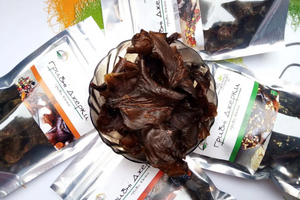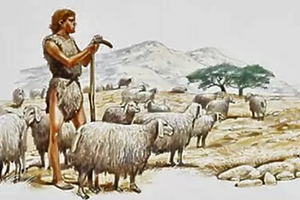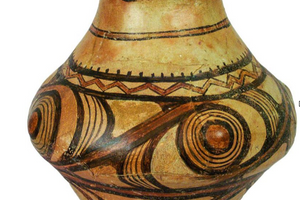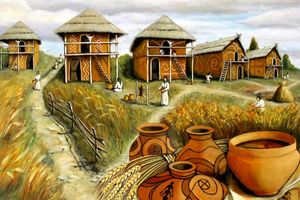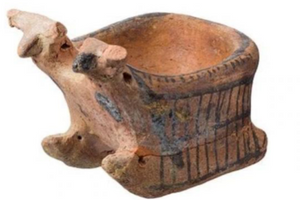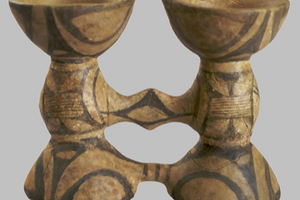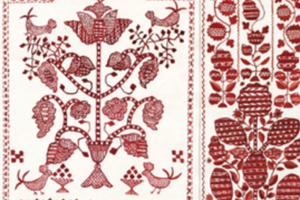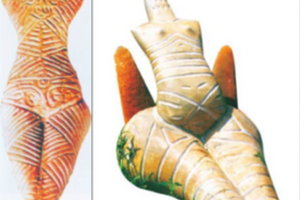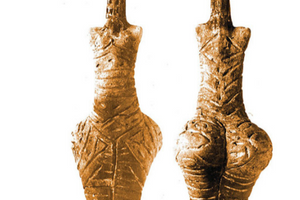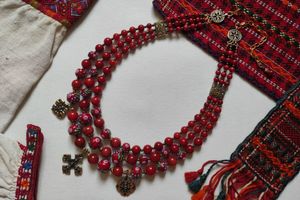The Trypillia culture, which flourished on the territory of modern-day Ukraine during the earliest known period of agriculture, revealed the great importance of cereals. Cereals such as wheat, rye, and oats played an important role in the daily lives of Trypillians, reflecting their knowledge of agriculture, cultivation practices, and beliefs.
Cereals for food
First of all, cereals were an integral part of Trypillians' diet. They were used to make bread, cereals, and other products that were the basis of their diet. Wheat, rye, and oats had nutritional properties that met people's needs for vitamins, minerals, and other substances. They provided energy and were an important source of food for the Trypillian population.
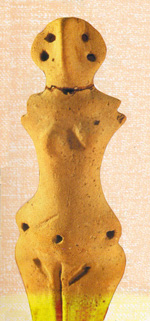 A grain in the faith of Trypillians
A grain in the faith of Trypillians
In addition, cereals played an important role in the religious and mythological beliefs of Trypillians. Clay images of female ancestors depicted full-bodied women giving birth, and grain or flour from it was added to the clay of these figurines. This symbolized the "funeral" of the grain in the ground (sowing) and its "resurrection" (spring sprouts), which reflected the idea of eternal reincarnation and rebirth of the souls of deceased relatives through the bodies of newborn children. On the belly of the Goddess, who was also a symbol of fertility, was a rhombus divided into four parts with dots symbolizing a sown field.
Agriculture
Cereals also played an important role in Trypillian farming practices. According to archaeological findings, Trypillians grew various types of grain, including wheat, rye, and oats. They used various tools to cultivate the land, such as hoes and sickles, but also harvested the ears by hand. Farming was one of the most developed sectors of the Trypillians' economy, and they cultivated the land around their settlements, taking care to maintain high quality farming practices.
Economy and trade
It is important to note that grain crops not only met the nutritional needs of Trypillians, but were also important for their economy and trade. Growing grain allowed for the creation of stocks for storage and exchange, facilitating the development of trade between different settlements and cultures.
Cereals played a multifaceted role in Trypillia culture: they were the basis of nutrition, a symbol of religious beliefs, key elements of agricultural practice, and an important resource for the economy and trade. They not only reflected the level of agricultural development at the time, but also testified to the complex interrelationships between culture and the natural cycles of rebirth and fertility. Cereals were of great importance to the Trypillian population, shaping their way of life, beliefs, and economy.
The information was collected by the editor Dmytro Hnylozubenko
References:
- https://shron1.chtyvo.org.ua/Pashkevych_Halyna/Rilnytstvo_plemen_trypilskoi_kultury.pdf?PHPSESSID=1jocq6g06l7ld6houofkhofjl2
- https://osvita.ua/vnz/reports/history/4704/
- https://spadok.org.ua/trypillya/yakoiu-bula-vira-trypiltsiv
- Reva M.L., Reva N.N. Wild edible plants of Ukraine - K.: Naukova Dumka, 1976. 166 p.
- Trypillia culture: A scientific and popular essay - K.: Publishing House of the Academy of Sciences of the USSR, 1941. 84 p.: ill. - Bibliography: pp. 82-83.




























































